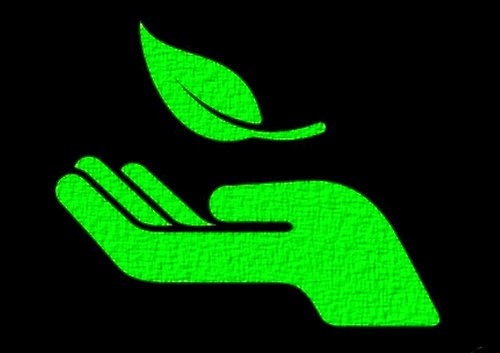How much you know about the Ebola?
Science & Global News
How much you know about the Ebola?
by WHO
Ebola virus disease (EVD), Ebola hemorrhagic fever (EHF), or simply Ebola is a disease of humans and other primates caused by an ebolavirus. Symptoms start two days to three weeks after contracting the virus, with a fever, sore throat, muscle pain, and headaches. Typically, vomiting, diarrhea, and rash follow, along with decreased function of the liver and kidneys. Around this time, affected people may begin to bleed both within the body and externally.
- Ebola virus disease (EVD), formerly known as Ebola haemorrhagic fever, is a severe, often fatal illness in humans.
-
- The virus is transmitted to people from wild animals and spreads in the human population through human-to-human transmission.
-
- The average EVD case fatality rate is around 50%. Case fatality rates have varied from 25% to 90% in past outbreaks.
-
- The first EVD outbreaks occurred in remote villages in Central
Africa, near tropical rainforests, but the most recent outbreak in west
Africa has involved major urban as well as rural areas.
-
- Community engagement is key to successfully controlling
outbreaks. Good outbreak control relies on applying a package of
interventions, namely case management, surveillance and contact tracing,
a good laboratory service, safe burials and social mobilisation.
-
- Early supportive care with rehydration, symptomatic treatment
improves survival. There is as yet no licensed treatment proven to
neutralise the virus but a range of blood, immunological and drug
therapies are under development.
-
- There are currently no licensed Ebola vaccines but 2 potential candidates are undergoing evaluation.
Background
The Ebola virus causes an acute, serious illness which is
often fatal if untreated. Ebola virus disease (EVD) first appeared in
1976 in 2 simultaneous outbreaks, one in Nzara, Sudan, and the other in
Yambuku, Democratic Republic of Congo. The latter occurred in a village
near the Ebola River, from which the disease takes its name.
The current outbreak in west Africa, (first cases notified in
March 2014), is the largest and most complex Ebola outbreak since the
Ebola virus was first discovered in 1976. There have been more cases and
deaths in this outbreak than all others combined. It has also spread
between countries starting in Guinea then spreading across land borders
to Sierra Leone and Liberia, by air (1 traveller only) to Nigeria, and
by land (1 traveller) to Senegal.
The most severely affected countries, Guinea, Sierra Leone and
Liberia have very weak health systems, lacking human and
infrastructural resources, having only recently emerged from long
periods of conflict and instability. On August 8, the WHO
Director-General declared this outbreak a Public Health Emergency of
International Concern.
A separate, unrelated Ebola outbreak began in Boende, Equateur, an isolated part of the Democratic Republic of Congo.
The virus family Filoviridae includes 3 genera: Cuevavirus,
Marburgvirus, and Ebolavirus. There are 5 species that have been
identified: Zaire, Bundibugyo, Sudan, Reston and Taï Forest. The first
3, Bundibugyo ebolavirus, Zaire ebolavirus, and Sudan ebolavirus have
been associated with large outbreaks in Africa. The virus causing the
2014 west African outbreak belongs to the Zaire species.

Transmission
It is thought that fruit bats of the Pteropodidae family are
natural Ebola virus hosts. Ebola is introduced into the human
population through close contact with the blood, secretions, organs or
other bodily fluids of infected animals such as chimpanzees, gorillas,
fruit bats, monkeys, forest antelope and porcupines found ill or dead or
in the rainforest.

Ebola then spreads through human-to-human transmission via
direct contact (through broken skin or mucous membranes) with the blood,
secretions, organs or other bodily fluids of infected people, and with
surfaces and materials (e.g. bedding, clothing) contaminated with these
fluids.
Health-care workers have frequently been infected while
treating patients with suspected or confirmed EVD. This has occurred
through close contact with patients when infection control precautions
are not strictly practiced.
Burial ceremonies in which mourners have direct contact with
the body of the deceased person can also play a role in the transmission
of Ebola.
People remain infectious as long as their blood and body
fluids, including semen and breast milk, contain the virus. Men who have
recovered from the disease can still transmit the virus through their
semen for up to 7 weeks after recovery from illness.
Symptoms of Ebola virus disease
The incubation period, that is, the time interval from
infection with the virus to onset of symptoms is 2 to 21 days. Humans
are not infectious until they develop symptoms. First symptoms are the
sudden onset of fever fatigue, muscle pain, headache and sore throat.
This is followed by vomiting, diarrhoea, rash, symptoms of impaired
kidney and liver function, and in some cases, both internal and external
bleeding (e.g. oozing from the gums, blood in the stools). Laboratory
findings include low white blood cell and platelet counts and elevated
liver enzymes.
Diagnosis
It can be difficult to distinguish EVD from other infectious
diseases such as malaria, typhoid fever and meningitis. Confirmation
that symptoms are caused by Ebola virus infection are made using the
following investigations:
- antibody-capture enzyme-linked immunosorbent assay (ELISA)
- antigen-capture detection tests
- serum neutralization test
- reverse transcriptase polymerase chain reaction (RT-PCR) assay
- electron microscopy
- virus isolation by cell culture.
Samples from patients are an extreme biohazard risk;
laboratory testing on non-inactivated samples should be conducted under
maximum biological containment conditions.
Treatment and vaccines
Supportive care-rehydration with oral or intravenous fluids-
and treatment of specific symptoms, improves survival. There is as yet
no proven treatment available for EVD. However, a range of potential
treatments including blood products, immune therapies and drug therapies
are currently being evaluated. No licensed vaccines are available yet,
but 2 potential vaccines are undergoing human safety testing.
Prevention and control
 Good outbreak control relies on applying a package of
interventions, namely case management, surveillance and contact tracing,
a good laboratory service, safe burials and social mobilisation.
Community engagement is key to successfully controlling outbreaks.
Raising awareness of risk factors for Ebola infection and protective
measures that individuals can take is an effective way to reduce human
transmission. Risk reduction messaging should focus on several factors:
Good outbreak control relies on applying a package of
interventions, namely case management, surveillance and contact tracing,
a good laboratory service, safe burials and social mobilisation.
Community engagement is key to successfully controlling outbreaks.
Raising awareness of risk factors for Ebola infection and protective
measures that individuals can take is an effective way to reduce human
transmission. Risk reduction messaging should focus on several factors:
- Reducing the risk of wildlife-to-human transmission from
contact with infected fruit bats or monkeys/apes and the consumption of
their raw meat. Animals should be handled with gloves and other
appropriate protective clothing. Animal products (blood and meat) should
be thoroughly cooked before consumption.
-
- Reducing the risk of human-to-human transmission from
direct or close contact with people with Ebola symptoms, particularly
with their bodily fluids. Gloves and appropriate personal protective
equipment should be worn when taking care of ill patients at home.
Regular hand washing is required after visiting patients in hospital, as
well as after taking care of patients at home.
-
- Outbreak containment measures including prompt and safe
burial of the dead, identifying people who may have been in contact with
someone infected with Ebola, monitoring the health of contacts for 21
days, the importance of separating the healthy from the sick to prevent
further spread, the importance of good hygiene and maintaining a clean
environment.
Controlling infection in health-care settings:
Health-care workers should always take standard precautions
when caring for patients, regardless of their presumed diagnosis. These
include basic hand hygiene, respiratory hygiene, use of personal
protective equipment (to block splashes or other contact with infected
materials), safe injection practices and safe burial practices.
Health-care workers caring for patients with suspected or
confirmed Ebola virus should apply extra infection control measures to
prevent contact with the patient’s blood and body fluids and
contaminated surfaces or materials such as clothing and bedding. When in
close contact (within 1 metre) of patients with EBV, health-care
workers should wear face protection (a face shield or a medical mask and
goggles), a clean, non-sterile long-sleeved gown, and gloves (sterile
gloves for some procedures).
Laboratory workers are also at risk. Samples taken from humans
and animals for investigation of Ebola infection should be handled by
trained staff and processed in suitably equipped laboratories.
The FAQ on Ebola
What is Ebola virus disease?
Ebola virus disease (formerly known as Ebola haemorrhagic
fever) is a severe, often fatal illness, with a death rate of up to 90%.
The illness affects humans and nonhuman primates (monkeys, gorillas,
and chimpanzees).
Ebola first appeared in 1976 in two simultaneous outbreaks,
one in a village near the Ebola River in the Democratic Republic of
Congo, and the other in a remote area of Sudan.
The origin of the virus is unknown but fruit bats
(Pteropodidae) are considered the likely host of the Ebola virus, based
on available evidence.

How do people become infected with the virus?
In the current outbreak in West Africa, the majority of cases
in humans have occurred as a result of human-to-human transmission.
Infection occurs from direct contact through broken skin or
mucous membranes with the blood, or other bodily fluids or secretions
(stool, urine, saliva, semen) of infected people. Infection can also
occur if broken skin or mucous membranes of a healthy person come into
contact with environments that have become contaminated with an Ebola
patient’s infectious fluids such as soiled clothing, bed linen, or used
needles.
More than 100 health-care workers have been exposed to the
virus while caring for Ebola patients. This happens because they may not
have been wearing personal protection equipment or were not properly
applying infection prevention and control measures when caring for the
patients. Health-care providers at all levels of the health system –
hospitals, clinics, and health posts – should be briefed on the nature
of the disease and how it is transmitted, and strictly follow
recommended infection control precautions.
WHO does not advise families or communities to care for
individuals who may present with symptoms of Ebola virus disease in
their homes. Rather, seek treatment in a hospital or treatment
centre staffed by doctors and nurses qualified and equipped to treat
Ebola virus victims. If you do choose to care for your loved one at
home, WHO strongly advises you to notify your local public health
authority and receive appropriate training, equipment (gloves and
personal protective equipment [PPE]) for treatment, instructions on
proper removal and disposal of PPE, and information on how to prevent
further infection and transmission of the disease to yourself, other
family members, or the community.
Additional transmission has occurred in communities during
funerals and burial rituals. Burial ceremonies in which mourners have
direct contact with the body of the deceased person have played a role
in the transmission of Ebola. Persons who have died of Ebola must be
handled using strong protective clothing and gloves and must be buried
immediately. WHO advises that the deceased be handled and buried by
trained case management professionals, who are equipped to properly bury
the dead.
People are infectious as long as their blood and secretions
contain the virus. For this reason, infected patients receive close
monitoring from medical professionals and receive laboratory tests to
ensure the virus is no longer circulating in their systems before they
return home. When the medical professionals determine it is okay for the
patient to return home, they are no longer infectious and cannot infect
anyone else in their communities. Men who have recovered from the
illness can still spread the virus to their partner through their semen
for up to 7 weeks after recovery. For this reason, it is important for
men to avoid sexual intercourse for at least 7 weeks after recovery or
to wear condoms if having sexual intercourse during 7 weeks after
recovery.
Generally, a person must come into contact with an animal that
has Ebola and it can then spread within the community from human to
human.
Who is most at risk?
During an outbreak, those at higher risk of infection are:
- health workers;
- family members or others in close contact with infected people;
- mourners who have direct contact with the bodies of the deceased as part of burial ceremonies.
-
More research is needed to understand if some groups, such as
immuno-compromised people or those with other underlying health
conditions, are more susceptible than others to contracting the virus.
Exposure to the virus can be controlled through the use of
protective measures in clinics and hospitals, at community gatherings,
or at home.
What are typical signs and symptoms of infection?
Sudden onset of fever, intense weakness, muscle pain, headache
and sore throat are typical signs and symptoms. This is followed by
vomiting, diarrhoea, rash, impaired kidney and liver function, and in
some cases, both internal and external bleeding.
Laboratory findings include low white blood cell and platelet counts, and elevated liver enzymes.
The incubation period, or the time interval from infection to
onset of symptoms, is from 2 to 21 days. The patients become contagious
once they begin to show symptoms. They are not contagious during the
incubation period.
Ebola virus disease infections can only be confirmed through laboratory testing.
When should someone seek medical care?
If a person has been in an area known to have Ebola virus
disease or in contact with a person known or suspected to have Ebola and
they begin to have symptoms, they should seek medical care immediately.
Any cases of persons who are suspected to have the disease
should be reported to the nearest health unit without delay. Prompt
medical care is essential to improving the rate of survival from the
disease. It is also important to control spread of the disease and
infection control procedures need to be started immediately.
What is the treatment?
Severely ill patients require intensive supportive care. They
are frequently dehydrated and need intravenous fluids or oral
rehydration with solutions that contain electrolytes. There is currently
no specific treatment to cure the disease.
Some patients will recover with the appropriate medical care.
To help control further spread of the virus, people that are
suspected or confirmed to have the disease should be isolated from other
patients and treated by health workers using strict infection control
precautions.
What can I do? Can it be prevented? Is there a vaccine?
Currently, there is no licensed medicine or vaccine for Ebola virus disease, but several products are under development.
Ways to prevent infection and transmission
While initial cases of Ebola virus disease are contracted by
handling infected animals or carcasses, secondary cases occur by direct
contact with the bodily fluids of an ill person, either through unsafe
case management or unsafe burial practices. During this outbreak, most
of the disease has spread through human-to-human transmission. Several
steps can be taken to help in preventing infection and limiting or
stopping transmission.
- Understand the nature of the disease, how it is transmitted, and
how to prevent it from spreading further.
-
- Listen to and follow directives issued by your country’s respective Ministry of Health.
-
- If you suspect someone close to you or in your community of
having Ebola virus disease, encourage and support them in seeking
appropriate medical treatment in a health-care facility.
-
- If you choose to care for an ill person in your home, notify
public health officials of your intentions so they can train you and
provide appropriate gloves and personal protective equipment (PPE)
(gloves, impermeable gown, boots/closed shoes with overshoes, mask and
eye protection for splashes), as well as instructions as a reminder on
how to properly care for the patient, protect yourself and your family,
and properly dispose of the PPE after use. N.B. WHO does not
recommend home care and strongly advises individuals and their family
members to seek professional care in a treatment centre.
-
- When visiting patients in the hospital or caring for someone at
home, hand washing with soap and water is recommended after touching a
patient, being in contact with their bodily fluids, or touching his/her
surroundings.
-
- People who have died from Ebola should only be handled using
appropriate protective equipment and should be buried immediately by
public health professionals who are trained in safe burial procedures.
-
Additionally, individuals should reduce contact with high-risk
infected animals (i.e. fruit bats, monkeys or apes) in the affected
rainforest areas. If you suspect an animal is infected, do not handle
it. Animal products (blood and meat) should be thoroughly cooked before
eating.
What about health workers? How should they protect themselves while caring for patients?
Health workers treating patients with suspected or confirmed
illness are at higher risk of infection than other groups. During an
outbreak a number of important actions will reduce or stop the spread of
the virus and protect health workers and others in the health-care
setting. These actions are called “standard and other additional
precautions” and are evidence-based recommendations known to prevent the
spread of infections. The following questions and answers describe the
precautions in detail.
Should patients with suspected or confirmed Ebola virus be separated from other patients?
Isolating patients with suspected or confirmed Ebola virus
disease in single isolation rooms is recommended. Where isolation rooms
are not available, it is important to assign designated areas, separate
from other patients, for suspected and confirmed cases. In these
designated areas, suspect and confirmed cases should also be separate.
Access to these areas should be restricted, needed equipment should be
dedicated strictly to suspected and confirmed EVD treatment areas, and
clinical and non-clinical personnel should be exclusively assigned to
isolation rooms and dedicated areas.
Are visitors allowed in areas where patients suspected or confirmed Ebola virus disease are admitted?
Stopping visitor access to patients infected with EVD is
preferred. If this is not possible, access should be given only to those
individuals who are necessary for the patient’s well-being and care,
such as a child’s parent.
Is protective equipment required when caring for these patients?
- In addition to standard health-care precautions, health-care
workers should strictly apply recommended infection control measures to
avoid exposure to infected blood, fluids, or contaminated environments
or objects – such as a patient’s soiled linen or used needles.
-
- All visitors and health-care workers should rigorously use what
is known as personal protective equipment (PPE). PPE should include at
least: gloves, an impermeable gown, boots/closed shoes with overshoes, a
mask, and eye protection for splashes (goggles or face shields).
Is hand hygiene important?
Hand hygiene is essential and should be performed:
- before donning gloves and wearing PPE on entry to the isolation room/area;
-
- before any clean or aseptic procedures is being performed on a patient;
-
- after any exposure risk or actual exposure with a patient’s blood or body fluids;
-
- after touching (even potentially) contaminated surfaces, items, or equipment in the patient’s surroundings; and
-
- after removal of PPE, upon leaving the isolation area.
-
It is important to note that neglecting to perform hand
hygiene after removing PPE will reduce or negate any benefits of the
PPE.
Either an alcohol-based hand rub or soap and running water can
be used for hand hygiene, applying the correct technique recommended by
WHO. It is important to always perform hand hygiene with soap and
running water when hands are visibly soiled. Alcohol-based hand rubs
should be made available at every point of care (at the entrance and
within the isolation rooms and areas); running water, soap, and single
use towels should also be always available.
What other precautions are necessary in the health-care setting?
Other key precautions are safe injection and phlebotomy
procedures, including safe management of sharps, regular and rigorous
environmental cleaning, decontamination of surfaces and equipment, and
management of soiled linen and of waste.
In addition, it is important to ensure safe processing of
laboratory samples from suspected or confirmed patients with EDV and
safe handling of dead bodies or human remains for post-mortem
examination and burial preparation. Any health-care workers and other
professionals undertaking these tasks in connection with suspected or
confirmed patients with Ebola virus disease should wear appropriate PPE
and follow precautions and procedures recommended by WHO.
What about rumours that some foods can prevent or treat the infection?
WHO strongly recommends that people seek credible health advice about Ebola virus disease from their public health authority.
While there is no specific drug against Ebola, the best
treatment is intensive supportive treatment provided in the hospital by
health workers using strict infection control procedures. The infection
can be controlled through recommended protective measures.
How does WHO protect health during outbreaks?
WHO provides technical advice to countries and communities to prepare for and respond to Ebola outbreaks.
WHO actions include:
- disease surveillance and information-sharing across regions to watch for outbreaks;
-
- technical assistance to investigate and contain health threats
when they occur – such as on-site help to identify sick people and track
disease patterns;
-
- advice on prevention and treatment options;
-
- deployments of experts and the distribution of health supplies
(such as personal protection gear for health workers) when they are
requested by the country;
-
- communications to raise awareness of the nature of the disease
and protective health measures to control transmission of the virus; and
-
- activation of regional and global networks of experts to provide
assistance, if requested, and mitigate potential international health
effects and disruptions of travel and trade.
During an outbreak, numbers of cases reported by health officials can go up and down? Why?
During an Ebola outbreak, the affected country’s public health
authority reports its disease case numbers and deaths. Figures can
change daily. Case numbers reflect both suspected cases and
laboratory-confirmed cases of Ebola. Sometimes numbers of suspected and
confirmed cases are reported together. Sometimes they are reported
separately. Thus, numbers can shift between suspected and confirmed
cases.
Analyzing case data trends, over time, and with additional
information, is generally more helpful to assess the public health
situation and determine the appropriate response.
Is it safe to travel during an outbreak? What is WHO’s travel advice?
During an outbreak, WHO reviews the public health situation
regularly and recommends any travel or trade restrictions, if necessary,
and may inform national authorities to implement it. WHO is currently
reviewing its recommendations for travel and expects to issue advice in
the coming days.
While travellers should always be vigilant with regard to
their health and those around them, the risk of infection for travellers
is very low since person-to-person transmission results from direct
contact with the body fluids or secretions of an infected patient.
Is it safe to travel with persons who have Ebola?
As with any illness or disease, it is always possible that a
person who has been exposed to Ebola virus may choose to travel. If the
individual has not developed symptoms (see FAQ #4), they cannot transmit
EVD to those around them. If the individual does have symptoms, they
should seek immediate medical attention at the first sign they are
feeling unwell. This may require either notifying the flight crew or
ship crew or, upon arrival at a destination, seeking immediate medical
attention. Travellers who show initial symptoms of EVD should be
isolated to prevent further transmission. Although the risk to fellow
travellers in such a situation is very low, contact tracing is
recommended under these circumstances.
Is it safe to travel to West Africa on business or to visit family and friends?
The risk of a tourist or businessman/woman becoming infected
with Ebola virus during a visit to the affected areas and developing
disease after returning is extremely low, even if the visit included
travel to the local areas from which primary cases have been reported.
Transmission requires direct contact with blood, secretions, organs or
other body fluids of infected living or dead persons or animal, all of
which are unlikely exposures for the average traveller. In any event,
tourists are advised to avoid all such contacts.
If you are visiting family or friends in the affected areas,
the risk is similarly low, unless you have direct physical contact with a
person who is ill or who has died. If this is the case, it is important
to notify public health authorities and engage in contact tracing.
Contact tracing is used to confirm you have not been exposed to EVD and
to prevent further spread of the disease through monitoring.
WHO’s general travel advice
- Travelers should avoid all contact with infected patients.
- Health workers traveling to affected areas should strictly follow WHO-recommended infection control guidance.
- Anyone who has stayed in areas where cases were recently reported
should be aware of the symptoms of infection and seek medical attention
at the first sign of illness.
- Clinicians caring for travelers returning from affected areas
with compatible symptoms are advised to consider the possibility of
Ebola virus disease.
-
MORE INFORMATION:
wikipedia.org/wiki/Ebola_virus
cdc.gov/vhf/ebola/hcp/case-definition.html
SOURCE: wikipedia.org/wiki/Ebola_virus_disease
who.int/csr/disease/ebola/faq-ebola/en/
who.int/mediacentre/factsheets/fs103/en/
Images via wikipedia, the images is in the public domain.
Download the FAQ on Ebola in pdf format by WHO.
"No Copyright Infringement Intended, Strictly For Promotional Purposes Only! All Rights Reserved To Their Respective Owners."
"Copyright
Disclaimer Under Section 107 of the Copyright Act 1976, allowance is
made for "fair use" for purposes such as criticism, comment, news
reporting, teaching, scholarship, and research. Fair use is a use
permitted by copyright statute that might otherwise be infringing.
Non-profit, educational or personal use tips the balance in favor of
fair use."
How much you know about the Ebola?
by WHO
Ebola virus disease (EVD), Ebola hemorrhagic fever (EHF), or simply Ebola is a disease of humans and other primates caused by an ebolavirus. Symptoms start two days to three weeks after contracting the virus, with a fever, sore throat, muscle pain, and headaches. Typically, vomiting, diarrhea, and rash follow, along with decreased function of the liver and kidneys. Around this time, affected people may begin to bleed both within the body and externally.
- Ebola virus disease (EVD), formerly known as Ebola haemorrhagic fever, is a severe, often fatal illness in humans.
- The virus is transmitted to people from wild animals and spreads in the human population through human-to-human transmission.
- The average EVD case fatality rate is around 50%. Case fatality rates have varied from 25% to 90% in past outbreaks.
- The first EVD outbreaks occurred in remote villages in Central Africa, near tropical rainforests, but the most recent outbreak in west Africa has involved major urban as well as rural areas.
- Community engagement is key to successfully controlling outbreaks. Good outbreak control relies on applying a package of interventions, namely case management, surveillance and contact tracing, a good laboratory service, safe burials and social mobilisation.
- Early supportive care with rehydration, symptomatic treatment improves survival. There is as yet no licensed treatment proven to neutralise the virus but a range of blood, immunological and drug therapies are under development.
- There are currently no licensed Ebola vaccines but 2 potential candidates are undergoing evaluation.
Background
The Ebola virus causes an acute, serious illness which is
often fatal if untreated. Ebola virus disease (EVD) first appeared in
1976 in 2 simultaneous outbreaks, one in Nzara, Sudan, and the other in
Yambuku, Democratic Republic of Congo. The latter occurred in a village
near the Ebola River, from which the disease takes its name.
The current outbreak in west Africa, (first cases notified in
March 2014), is the largest and most complex Ebola outbreak since the
Ebola virus was first discovered in 1976. There have been more cases and
deaths in this outbreak than all others combined. It has also spread
between countries starting in Guinea then spreading across land borders
to Sierra Leone and Liberia, by air (1 traveller only) to Nigeria, and
by land (1 traveller) to Senegal.
The most severely affected countries, Guinea, Sierra Leone and
Liberia have very weak health systems, lacking human and
infrastructural resources, having only recently emerged from long
periods of conflict and instability. On August 8, the WHO
Director-General declared this outbreak a Public Health Emergency of
International Concern.
A separate, unrelated Ebola outbreak began in Boende, Equateur, an isolated part of the Democratic Republic of Congo.
The virus family Filoviridae includes 3 genera: Cuevavirus,
Marburgvirus, and Ebolavirus. There are 5 species that have been
identified: Zaire, Bundibugyo, Sudan, Reston and Taï Forest. The first
3, Bundibugyo ebolavirus, Zaire ebolavirus, and Sudan ebolavirus have
been associated with large outbreaks in Africa. The virus causing the
2014 west African outbreak belongs to the Zaire species.
Transmission
It is thought that fruit bats of the Pteropodidae family are
natural Ebola virus hosts. Ebola is introduced into the human
population through close contact with the blood, secretions, organs or
other bodily fluids of infected animals such as chimpanzees, gorillas,
fruit bats, monkeys, forest antelope and porcupines found ill or dead or
in the rainforest.
Ebola then spreads through human-to-human transmission via
direct contact (through broken skin or mucous membranes) with the blood,
secretions, organs or other bodily fluids of infected people, and with
surfaces and materials (e.g. bedding, clothing) contaminated with these
fluids.
Health-care workers have frequently been infected while
treating patients with suspected or confirmed EVD. This has occurred
through close contact with patients when infection control precautions
are not strictly practiced.
Burial ceremonies in which mourners have direct contact with the body of the deceased person can also play a role in the transmission of Ebola.
People remain infectious as long as their blood and body
fluids, including semen and breast milk, contain the virus. Men who have
recovered from the disease can still transmit the virus through their
semen for up to 7 weeks after recovery from illness.
Symptoms of Ebola virus disease
The incubation period, that is, the time interval from
infection with the virus to onset of symptoms is 2 to 21 days. Humans
are not infectious until they develop symptoms. First symptoms are the
sudden onset of fever fatigue, muscle pain, headache and sore throat.
This is followed by vomiting, diarrhoea, rash, symptoms of impaired
kidney and liver function, and in some cases, both internal and external
bleeding (e.g. oozing from the gums, blood in the stools). Laboratory
findings include low white blood cell and platelet counts and elevated
liver enzymes.
Diagnosis
It can be difficult to distinguish EVD from other infectious
diseases such as malaria, typhoid fever and meningitis. Confirmation
that symptoms are caused by Ebola virus infection are made using the
following investigations:
- antibody-capture enzyme-linked immunosorbent assay (ELISA)
- antigen-capture detection tests
- serum neutralization test
- reverse transcriptase polymerase chain reaction (RT-PCR) assay
- electron microscopy
- virus isolation by cell culture.
Samples from patients are an extreme biohazard risk;
laboratory testing on non-inactivated samples should be conducted under
maximum biological containment conditions.
Treatment and vaccines
Supportive care-rehydration with oral or intravenous fluids-
and treatment of specific symptoms, improves survival. There is as yet
no proven treatment available for EVD. However, a range of potential
treatments including blood products, immune therapies and drug therapies
are currently being evaluated. No licensed vaccines are available yet,
but 2 potential vaccines are undergoing human safety testing.
Prevention and control
- Reducing the risk of wildlife-to-human transmission from contact with infected fruit bats or monkeys/apes and the consumption of their raw meat. Animals should be handled with gloves and other appropriate protective clothing. Animal products (blood and meat) should be thoroughly cooked before consumption.
- Reducing the risk of human-to-human transmission from direct or close contact with people with Ebola symptoms, particularly with their bodily fluids. Gloves and appropriate personal protective equipment should be worn when taking care of ill patients at home. Regular hand washing is required after visiting patients in hospital, as well as after taking care of patients at home.
- Outbreak containment measures including prompt and safe burial of the dead, identifying people who may have been in contact with someone infected with Ebola, monitoring the health of contacts for 21 days, the importance of separating the healthy from the sick to prevent further spread, the importance of good hygiene and maintaining a clean environment.
Controlling infection in health-care settings:
Health-care workers should always take standard precautions
when caring for patients, regardless of their presumed diagnosis. These
include basic hand hygiene, respiratory hygiene, use of personal
protective equipment (to block splashes or other contact with infected
materials), safe injection practices and safe burial practices.
Health-care workers caring for patients with suspected or
confirmed Ebola virus should apply extra infection control measures to
prevent contact with the patient’s blood and body fluids and
contaminated surfaces or materials such as clothing and bedding. When in
close contact (within 1 metre) of patients with EBV, health-care
workers should wear face protection (a face shield or a medical mask and
goggles), a clean, non-sterile long-sleeved gown, and gloves (sterile
gloves for some procedures).
Laboratory workers are also at risk. Samples taken from humans
and animals for investigation of Ebola infection should be handled by
trained staff and processed in suitably equipped laboratories.
The FAQ on Ebola
What is Ebola virus disease?
Ebola virus disease (formerly known as Ebola haemorrhagic
fever) is a severe, often fatal illness, with a death rate of up to 90%.
The illness affects humans and nonhuman primates (monkeys, gorillas,
and chimpanzees).
Ebola first appeared in 1976 in two simultaneous outbreaks,
one in a village near the Ebola River in the Democratic Republic of
Congo, and the other in a remote area of Sudan.
The origin of the virus is unknown but fruit bats
(Pteropodidae) are considered the likely host of the Ebola virus, based
on available evidence.
How do people become infected with the virus?
In the current outbreak in West Africa, the majority of cases
in humans have occurred as a result of human-to-human transmission.
Infection occurs from direct contact through broken skin or
mucous membranes with the blood, or other bodily fluids or secretions
(stool, urine, saliva, semen) of infected people. Infection can also
occur if broken skin or mucous membranes of a healthy person come into
contact with environments that have become contaminated with an Ebola
patient’s infectious fluids such as soiled clothing, bed linen, or used
needles.
More than 100 health-care workers have been exposed to the
virus while caring for Ebola patients. This happens because they may not
have been wearing personal protection equipment or were not properly
applying infection prevention and control measures when caring for the
patients. Health-care providers at all levels of the health system –
hospitals, clinics, and health posts – should be briefed on the nature
of the disease and how it is transmitted, and strictly follow
recommended infection control precautions.
WHO does not advise families or communities to care for
individuals who may present with symptoms of Ebola virus disease in
their homes. Rather, seek treatment in a hospital or treatment
centre staffed by doctors and nurses qualified and equipped to treat
Ebola virus victims. If you do choose to care for your loved one at
home, WHO strongly advises you to notify your local public health
authority and receive appropriate training, equipment (gloves and
personal protective equipment [PPE]) for treatment, instructions on
proper removal and disposal of PPE, and information on how to prevent
further infection and transmission of the disease to yourself, other
family members, or the community.
Additional transmission has occurred in communities during
funerals and burial rituals. Burial ceremonies in which mourners have
direct contact with the body of the deceased person have played a role
in the transmission of Ebola. Persons who have died of Ebola must be
handled using strong protective clothing and gloves and must be buried
immediately. WHO advises that the deceased be handled and buried by
trained case management professionals, who are equipped to properly bury
the dead.
People are infectious as long as their blood and secretions
contain the virus. For this reason, infected patients receive close
monitoring from medical professionals and receive laboratory tests to
ensure the virus is no longer circulating in their systems before they
return home. When the medical professionals determine it is okay for the
patient to return home, they are no longer infectious and cannot infect
anyone else in their communities. Men who have recovered from the
illness can still spread the virus to their partner through their semen
for up to 7 weeks after recovery. For this reason, it is important for
men to avoid sexual intercourse for at least 7 weeks after recovery or
to wear condoms if having sexual intercourse during 7 weeks after
recovery.
Generally, a person must come into contact with an animal that
has Ebola and it can then spread within the community from human to
human.
Who is most at risk?
During an outbreak, those at higher risk of infection are:
- health workers;
- family members or others in close contact with infected people;
- mourners who have direct contact with the bodies of the deceased as part of burial ceremonies.
More research is needed to understand if some groups, such as
immuno-compromised people or those with other underlying health
conditions, are more susceptible than others to contracting the virus.
Exposure to the virus can be controlled through the use of
protective measures in clinics and hospitals, at community gatherings,
or at home.
What are typical signs and symptoms of infection?
Sudden onset of fever, intense weakness, muscle pain, headache
and sore throat are typical signs and symptoms. This is followed by
vomiting, diarrhoea, rash, impaired kidney and liver function, and in
some cases, both internal and external bleeding.
Laboratory findings include low white blood cell and platelet counts, and elevated liver enzymes.
The incubation period, or the time interval from infection to
onset of symptoms, is from 2 to 21 days. The patients become contagious
once they begin to show symptoms. They are not contagious during the
incubation period.
Ebola virus disease infections can only be confirmed through laboratory testing.
When should someone seek medical care?
If a person has been in an area known to have Ebola virus
disease or in contact with a person known or suspected to have Ebola and
they begin to have symptoms, they should seek medical care immediately.
Any cases of persons who are suspected to have the disease
should be reported to the nearest health unit without delay. Prompt
medical care is essential to improving the rate of survival from the
disease. It is also important to control spread of the disease and
infection control procedures need to be started immediately.
What is the treatment?
Severely ill patients require intensive supportive care. They
are frequently dehydrated and need intravenous fluids or oral
rehydration with solutions that contain electrolytes. There is currently
no specific treatment to cure the disease.
Some patients will recover with the appropriate medical care.
To help control further spread of the virus, people that are
suspected or confirmed to have the disease should be isolated from other
patients and treated by health workers using strict infection control
precautions.
What can I do? Can it be prevented? Is there a vaccine?
Currently, there is no licensed medicine or vaccine for Ebola virus disease, but several products are under development.
Ways to prevent infection and transmission
While initial cases of Ebola virus disease are contracted by
handling infected animals or carcasses, secondary cases occur by direct
contact with the bodily fluids of an ill person, either through unsafe
case management or unsafe burial practices. During this outbreak, most
of the disease has spread through human-to-human transmission. Several
steps can be taken to help in preventing infection and limiting or
stopping transmission.
- Understand the nature of the disease, how it is transmitted, and how to prevent it from spreading further.
- Listen to and follow directives issued by your country’s respective Ministry of Health.
- If you suspect someone close to you or in your community of having Ebola virus disease, encourage and support them in seeking appropriate medical treatment in a health-care facility.
- If you choose to care for an ill person in your home, notify public health officials of your intentions so they can train you and provide appropriate gloves and personal protective equipment (PPE) (gloves, impermeable gown, boots/closed shoes with overshoes, mask and eye protection for splashes), as well as instructions as a reminder on how to properly care for the patient, protect yourself and your family, and properly dispose of the PPE after use. N.B. WHO does not recommend home care and strongly advises individuals and their family members to seek professional care in a treatment centre.
- When visiting patients in the hospital or caring for someone at home, hand washing with soap and water is recommended after touching a patient, being in contact with their bodily fluids, or touching his/her surroundings.
- People who have died from Ebola should only be handled using appropriate protective equipment and should be buried immediately by public health professionals who are trained in safe burial procedures.
Additionally, individuals should reduce contact with high-risk
infected animals (i.e. fruit bats, monkeys or apes) in the affected
rainforest areas. If you suspect an animal is infected, do not handle
it. Animal products (blood and meat) should be thoroughly cooked before
eating.
What about health workers? How should they protect themselves while caring for patients?
Health workers treating patients with suspected or confirmed
illness are at higher risk of infection than other groups. During an
outbreak a number of important actions will reduce or stop the spread of
the virus and protect health workers and others in the health-care
setting. These actions are called “standard and other additional
precautions” and are evidence-based recommendations known to prevent the
spread of infections. The following questions and answers describe the
precautions in detail.
Should patients with suspected or confirmed Ebola virus be separated from other patients?
Isolating patients with suspected or confirmed Ebola virus
disease in single isolation rooms is recommended. Where isolation rooms
are not available, it is important to assign designated areas, separate
from other patients, for suspected and confirmed cases. In these
designated areas, suspect and confirmed cases should also be separate.
Access to these areas should be restricted, needed equipment should be
dedicated strictly to suspected and confirmed EVD treatment areas, and
clinical and non-clinical personnel should be exclusively assigned to
isolation rooms and dedicated areas.
Are visitors allowed in areas where patients suspected or confirmed Ebola virus disease are admitted?
Stopping visitor access to patients infected with EVD is
preferred. If this is not possible, access should be given only to those
individuals who are necessary for the patient’s well-being and care,
such as a child’s parent.
Is protective equipment required when caring for these patients?
- In addition to standard health-care precautions, health-care workers should strictly apply recommended infection control measures to avoid exposure to infected blood, fluids, or contaminated environments or objects – such as a patient’s soiled linen or used needles.
- All visitors and health-care workers should rigorously use what is known as personal protective equipment (PPE). PPE should include at least: gloves, an impermeable gown, boots/closed shoes with overshoes, a mask, and eye protection for splashes (goggles or face shields).
Is hand hygiene important?
Hand hygiene is essential and should be performed:
- before donning gloves and wearing PPE on entry to the isolation room/area;
- before any clean or aseptic procedures is being performed on a patient;
- after any exposure risk or actual exposure with a patient’s blood or body fluids;
- after touching (even potentially) contaminated surfaces, items, or equipment in the patient’s surroundings; and
- after removal of PPE, upon leaving the isolation area.
It is important to note that neglecting to perform hand
hygiene after removing PPE will reduce or negate any benefits of the
PPE.
Either an alcohol-based hand rub or soap and running water can
be used for hand hygiene, applying the correct technique recommended by
WHO. It is important to always perform hand hygiene with soap and
running water when hands are visibly soiled. Alcohol-based hand rubs
should be made available at every point of care (at the entrance and
within the isolation rooms and areas); running water, soap, and single
use towels should also be always available.
What other precautions are necessary in the health-care setting?
Other key precautions are safe injection and phlebotomy
procedures, including safe management of sharps, regular and rigorous
environmental cleaning, decontamination of surfaces and equipment, and
management of soiled linen and of waste.
In addition, it is important to ensure safe processing of
laboratory samples from suspected or confirmed patients with EDV and
safe handling of dead bodies or human remains for post-mortem
examination and burial preparation. Any health-care workers and other
professionals undertaking these tasks in connection with suspected or
confirmed patients with Ebola virus disease should wear appropriate PPE
and follow precautions and procedures recommended by WHO.
What about rumours that some foods can prevent or treat the infection?
WHO strongly recommends that people seek credible health advice about Ebola virus disease from their public health authority.
While there is no specific drug against Ebola, the best
treatment is intensive supportive treatment provided in the hospital by
health workers using strict infection control procedures. The infection
can be controlled through recommended protective measures.
How does WHO protect health during outbreaks?
WHO provides technical advice to countries and communities to prepare for and respond to Ebola outbreaks.
WHO actions include:
- disease surveillance and information-sharing across regions to watch for outbreaks;
- technical assistance to investigate and contain health threats when they occur – such as on-site help to identify sick people and track disease patterns;
- advice on prevention and treatment options;
- deployments of experts and the distribution of health supplies (such as personal protection gear for health workers) when they are requested by the country;
- communications to raise awareness of the nature of the disease and protective health measures to control transmission of the virus; and
- activation of regional and global networks of experts to provide assistance, if requested, and mitigate potential international health effects and disruptions of travel and trade.
During an outbreak, numbers of cases reported by health officials can go up and down? Why?
During an Ebola outbreak, the affected country’s public health authority reports its disease case numbers and deaths. Figures can change daily. Case numbers reflect both suspected cases and laboratory-confirmed cases of Ebola. Sometimes numbers of suspected and confirmed cases are reported together. Sometimes they are reported separately. Thus, numbers can shift between suspected and confirmed cases.
Analyzing case data trends, over time, and with additional
information, is generally more helpful to assess the public health
situation and determine the appropriate response.
Is it safe to travel during an outbreak? What is WHO’s travel advice?
During an outbreak, WHO reviews the public health situation
regularly and recommends any travel or trade restrictions, if necessary,
and may inform national authorities to implement it. WHO is currently
reviewing its recommendations for travel and expects to issue advice in
the coming days.
While travellers should always be vigilant with regard to
their health and those around them, the risk of infection for travellers
is very low since person-to-person transmission results from direct
contact with the body fluids or secretions of an infected patient.
Is it safe to travel with persons who have Ebola?
As with any illness or disease, it is always possible that a
person who has been exposed to Ebola virus may choose to travel. If the
individual has not developed symptoms (see FAQ #4), they cannot transmit
EVD to those around them. If the individual does have symptoms, they
should seek immediate medical attention at the first sign they are
feeling unwell. This may require either notifying the flight crew or
ship crew or, upon arrival at a destination, seeking immediate medical
attention. Travellers who show initial symptoms of EVD should be
isolated to prevent further transmission. Although the risk to fellow
travellers in such a situation is very low, contact tracing is
recommended under these circumstances.
Is it safe to travel to West Africa on business or to visit family and friends?
The risk of a tourist or businessman/woman becoming infected
with Ebola virus during a visit to the affected areas and developing
disease after returning is extremely low, even if the visit included
travel to the local areas from which primary cases have been reported.
Transmission requires direct contact with blood, secretions, organs or
other body fluids of infected living or dead persons or animal, all of
which are unlikely exposures for the average traveller. In any event,
tourists are advised to avoid all such contacts.
If you are visiting family or friends in the affected areas,
the risk is similarly low, unless you have direct physical contact with a
person who is ill or who has died. If this is the case, it is important
to notify public health authorities and engage in contact tracing.
Contact tracing is used to confirm you have not been exposed to EVD and
to prevent further spread of the disease through monitoring.
WHO’s general travel advice
- Travelers should avoid all contact with infected patients.
- Health workers traveling to affected areas should strictly follow WHO-recommended infection control guidance.
- Anyone who has stayed in areas where cases were recently reported should be aware of the symptoms of infection and seek medical attention at the first sign of illness.
- Clinicians caring for travelers returning from affected areas with compatible symptoms are advised to consider the possibility of Ebola virus disease.
MORE INFORMATION:
wikipedia.org/wiki/Ebola_virus
cdc.gov/vhf/ebola/hcp/case-definition.html
SOURCE: wikipedia.org/wiki/Ebola_virus_disease
who.int/csr/disease/ebola/faq-ebola/en/
who.int/mediacentre/factsheets/fs103/en/
Images via wikipedia, the images is in the public domain.
Download the FAQ on Ebola in pdf format by WHO.
"No Copyright Infringement Intended, Strictly For Promotional Purposes Only! All Rights Reserved To Their Respective Owners."
"Copyright
Disclaimer Under Section 107 of the Copyright Act 1976, allowance is
made for "fair use" for purposes such as criticism, comment, news
reporting, teaching, scholarship, and research. Fair use is a use
permitted by copyright statute that might otherwise be infringing.
Non-profit, educational or personal use tips the balance in favor of
fair use."
"Copyright Disclaimer Under Section 107 of the Copyright Act 1976, allowance is made for "fair use" for purposes such as criticism, comment, news reporting, teaching, scholarship, and research. Fair use is a use permitted by copyright statute that might otherwise be infringing. Non-profit, educational or personal use tips the balance in favor of fair use."










































0 comentarios :